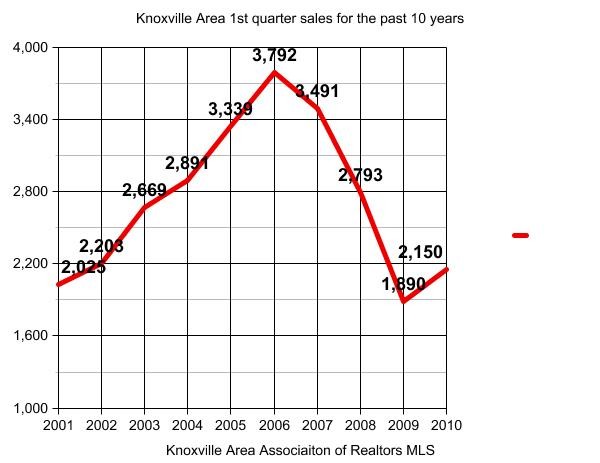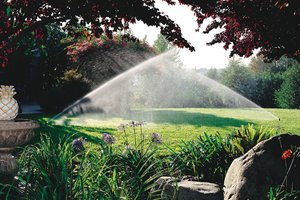What’s going on in 2010 with Knoxville TN area real estate?
Have a question about real estate in the greater Knoxville, TN area? Please ask; there are no dumb questions, just ones you need answers to. Please feel free to call or email any questions to: [email protected] or call 865-693-3232
Time for an update since the first quarter statistics for 2010 are now available. Let’s see how we did and which direction Knoxville area sales and home prices are headed.
First of all April is almost over now and that is the end of the $8,000 tax credit for lots of homebuyers. I believe this incentive has been driving between 30-40% of our market for the past several months. It will be very interesting to see what the trend is for the 2nd quarter of this year after it expires.
Local weekly sales dropped a little this week compared to last week. The Knox County Register of Deeds reported 159 transactions for the week of April 18th compared to 188 the past week of April 11th.
As both graphs indicate, the lower price ranges remain where the action is; from $100,000 to $200,000 with sharp dropoffs once you pass the $300,000 threshold.
And here’s the first quarter of 2010 compared to past first quarter figures. Still nowhere close to where we were a few years ago but a modest increase from last year’s first quarter.
260 more homes sold in the first quarter of 2010 versus 2009 but still a whopping 43.3% lower than the peak year of 2006.
Lack of jobs growth remains an issue for the house market. According to the US Department of Labor’s latest stats, in March the number of unemployed was little changed at 15 million and the unemployment rate remained at 9.7%.
Economists want to believe the economy has turned the corner but housing remains the bellweather indicator to confirm that belief and it isn’t showing broad and/or sustained growth just yet.
“Federal Reserve Board Chairman Ben Bernanke called housing a “critical” challenge to the economy. “We have yet to see evidence of a sustained recovery in the housing market,” Bernanke said in a speech on April 7.”
It will be an interesting next few weeks and whichever direction we head is likely an indicator of the the housing market direction for the remainder of this year.
On the plus side for buyers there remains a large supply of homes to choose from. Currently in the greater Knoxville, Tennessee area you can view 11,763 great houses and condos for sale at www.KnoxvilleHomeSearcher.com and I will be happy to help you become the owner of one.
Related articles by Zemanta
- What’s going on in 2010 with Knoxville TN area real estate? (knoxvilletennesseerealestateblog.com)
- What’s the current state of the Knoxville, TN real estate market? (knoxvilletennesseerealestateblog.com)
- Knox County Tennessee Register of Deeds property transfers for the week of March 28th (knoxvilletennesseerealestateblog.com)
- Knox County Register of Deeds real estate transfers for the week of Dec. 27th (knoxvilletennesseerealestateblog.com)
- Knoxville Real Estate Transfers for the week of February 28, 2010 (knoxvilletennesseerealestateblog.com)
- Knox County Register of Deeds real estate transfers for the week of Dec. 13th (knoxvilletennesseerealestateblog.com)
- Knox County, TN Register of Deeds transactions for the week of December 6th (knoxvilletennesseerealestateblog.com)
- What’s happening this month in Knoxville, TN real estate. (knoxvilletennesseerealestateblog.com)



![Reblog this post [with Zemanta]](http://img.zemanta.com/reblog_b.png?x-id=c97ffd59-70f3-498d-9c1b-86777d71b4bc)
 Your irrigation system can bring disease and rot to your lawn if improperly set. For best results, water in 40- to 60-minute intervals two to three times per week. Image: Rain Bird Corporation
Your irrigation system can bring disease and rot to your lawn if improperly set. For best results, water in 40- to 60-minute intervals two to three times per week. Image: Rain Bird Corporation






